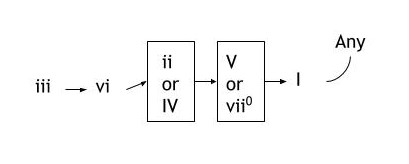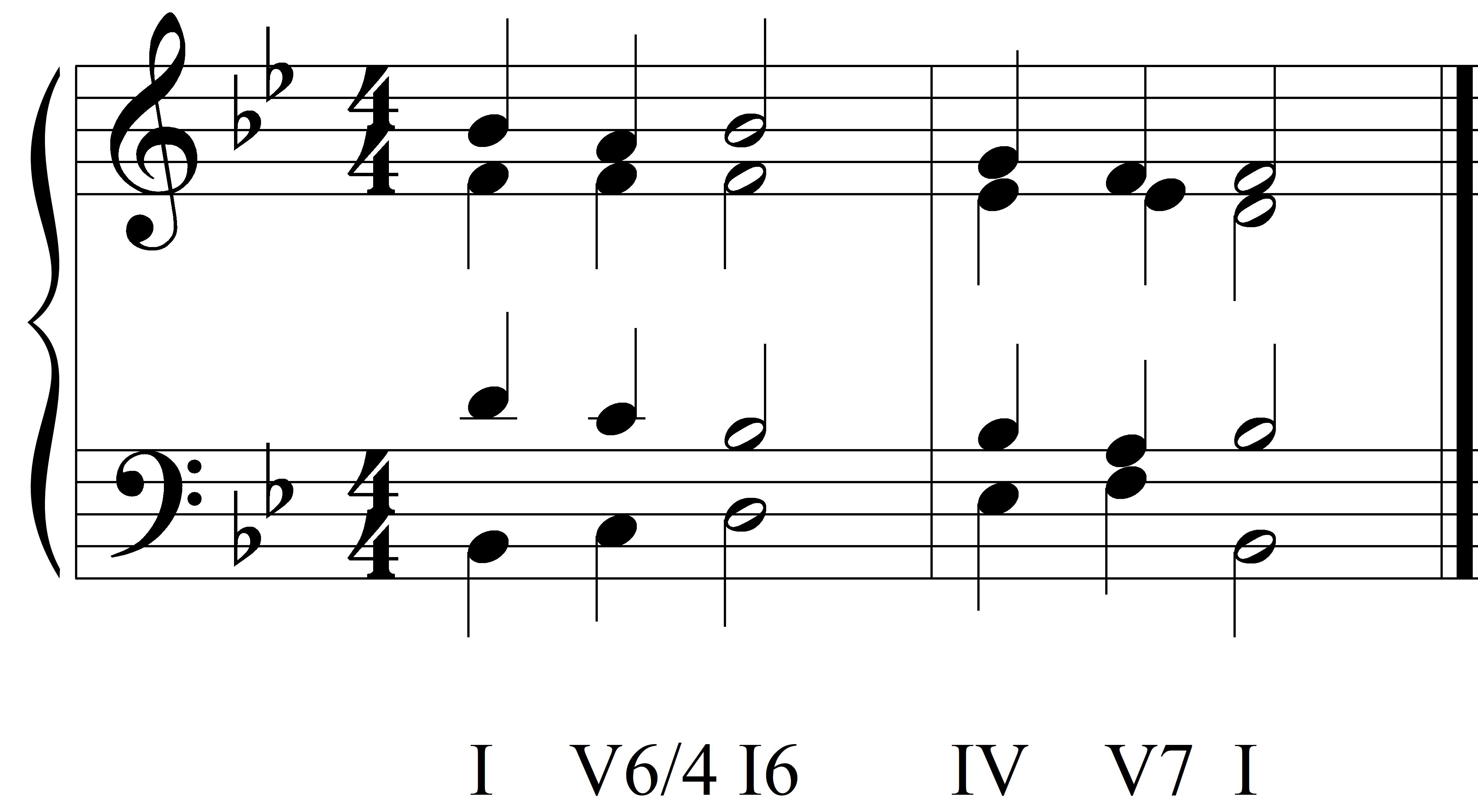Integrated Aural Skills 2018-19
Ear Training - More Complicated Harmonies
Chord Progressions
In Unit 11, we will study harmonic progressions composed of six chords. These chords will follow the logic of chord progressions that we studied in Unit 9, whose rules are determined by the principles of voice-leading.


The Anatomy of a 6-Chord Harmonic Dictation
- All the exercises we study will start on the tonic triad. The chords in the first measure will proceed logically according to the Unit 9 chord chart. No surprises!
- The second measure will contain a cadence (perfect authentic, imperfect authentic, deceptive, half, or plagal), which will be preceded by a pre-cadential chord. This pre-cadential chord will also conform to the logic of the chord chart.

Things to Notice
-
Measure 1: same logical three-chord progression as in our previous exercises. Do-re-mi in the bass voice implies tonic-dominant-tonic.
-
Measure 2: the cadence is an IAC (i.e. the progression is dominant-tonic, but the soprano ends on sol and not do so we can’t call this a PAC). The cadence is preceded by chord IV: in other words, a very logical, “textbook” way to precede V or V7.
-
Things to watch out for: learn how to differentiate between V and V7. Remember, V is a consonance (a major triad), whereas V7 is (doubly) dissonant because it contains the intervals of a tritone and a minor 7th. Listen out for that dissonance; it’s important.